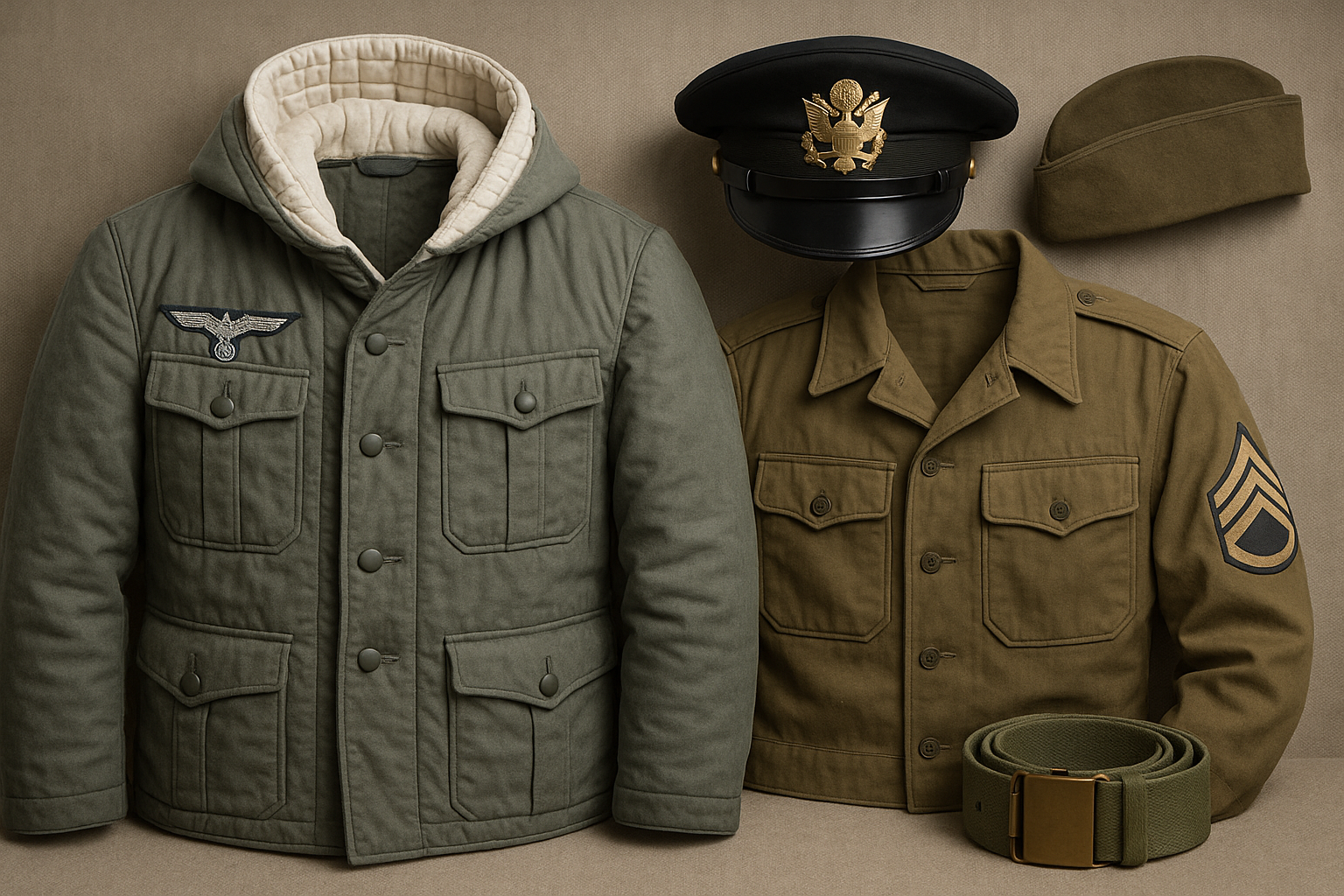
Essential Uniform Components from WWII: German Winter Jackets to U.S. Military Hats
Published on May 06, 2025
The Essential Components of WWII Uniforms: A Deep Dive into U.S. and German Military Gear
World War II remains one of the most significant periods in modern history, not only for its geopolitical impact but also for the evolution of military gear. Uniforms weren't just about appearance—they were engineered for survival, communication, and identification. At Paddelaters, we specialize in accurate historical reproductions and understanding the uniform components from both Allied and Axis forces is vital to appreciate the craftsmanship and function behind each piece.
Understanding WWII Uniform Components
A military uniform isn't a singular item—it's a carefully curated set of components designed for different roles, climates, and ranks. These typically include:
- Outerwear (parkas, jackets, coats)
- Headgear (helmets, field caps, military hats)
- Footwear (boots, gaiters)
- Utility gear (webbing, belts, pouches)
- Insignia and rank patches
Each of these served both functional and symbolic purposes. For instance, a soldier's hat could indicate rank. At the same time, a winter jacket might be the difference between life and death in freezing frontlines.
WW2 U.S. Gear: Functionality Meets Standardization
One of the defining aspects of American wartime logistics was the standardization of gear. The U.S. military introduced the M41 Field Jacket, the M1943 uniform system, and an array of gear meant to handle different combat scenarios.
1. M41 & M43 Field Jackets
These iconic jackets became the cornerstone of American GI uniforms. Made of cotton twill and lined for insulation, they were lightweight yet sturdy. The M1943 version improved upon its predecessor with a longer cut and better weather resistance.
2. United States Military Hats
U.S. headgear evolved during the war to match functionality and formality:
- Service caps: Worn during formal occasions and by officers.
- Garrison caps: Slim, foldable, and widely used for their portability.
- Combat helmets: Such as the M1 steel helmet is known for its durability and widespread use.
One notable style was the military black hat, typically worn by officers and motor corps personnel, offering a sharp contrast to the olive drab common to enlisted gear.
WW2 German Parkas and Winter Jackets: Surviving the Eastern Front
On the Axis side, German troops faced brutally cold conditions, especially on the Eastern Front. This led to the development of specialized cold-weather gear.
1. WW2 German Winter Jacket
Known for its quilted lining, fur collars, and camouflage designs, the WW2 German winter jacket wasn't just about warmth—it embodied innovation. The Wehrmacht issued several variations depending on rank and division, with the most famous being the reversible winter parka (white on one side for snow camouflage).
These parkas came with the following:
- Windproof outer layers
- Cotton or wool linings
- Waist and wrist ties for insulation
- Field-grey or splinter camouflage patterns
2. Authenticity in Detail
Reenactors and collectors often seek pieces that replicate:
- Original stitching patterns
- Proper weight and material (duck cotton or wool)
- Insignia placement, as seen in archival photos
Paddelaters offers museum-grade reproductions that stay true to these standards, making them ideal for film productions and serious historical displays.
Comparative Look: U.S. vs. German Uniform Components
ComponentU.S. MilitaryGerman Military
Jacket Style M41/M43 Field Jacket Reversible Winter Parka
Standard Hat Garrison Cap / M1 Helmet M43 Field Cap / Stahlhelm
Cold Weather Gear Wool Shirt, Sweater, Overcoat Quilted Jacket, Fur-lined Parka
Color Scheme Olive Drab / Khaki Field Grey / Camouflage
Insignia Cloth patches, subdued colors, Embroidered eagle, rank tabs, shoulder boards
The Role of Headgear: More Than Just Protection
Headgear in WWII carried significant meaning. A military black hat, for example, often symbolized authority or specialized units. In Germany, the SS and Panzer units famously wore black caps and uniforms to distinguish their elite status.
The U.S., on the other hand, used the olive green garrison cap as a unifying standard. However, higher-ranking officers often added piping to indicate rank.
Why Authenticity Matters: For Collectors, Reenactors, and Historians
Whether you're preparing for a reenactment or building a historical display, accuracy in uniform components adds credibility and immersion. Here’s why our clients at Paddelaters value authenticity:
- Educational impact: Schools and museums use accurate gear to teach history.
- Visual storytelling: Films and documentaries rely on true-to-era apparel.
- Reenactment realism: From D-Day reenactments to Bastogne battles, the right jacket or hat matters.
All items in our catalog, from the WW2 German winter jacket to the United States military hats, are based on original blueprints, photographs, and verified archival materials.
Caring for Your Uniform Components
Owning historically accurate pieces comes with responsibility. Here’s how to preserve them:
- Storage: Keep in dry, dark environments to avoid fabric degradation.
- Cleaning: Hand-wash or use wool-safe detergent for delicate materials.
- Maintenance: Replace buttons and patches only with era-appropriate replicas.
This ensures your collection maintains its value and historical integrity.
Where to Buy Authentic WWII Uniform Components
At Paddelaters, we don’t just sell uniforms—we provide a piece of history. Our catalog features:
- WW2 U.S. gear, including field jackets, helmets, and hats
- German parkas and winter wear, crafted to original specs
- Military black hats, insignia, and accessories
Each item is backed by thorough research and a passion for authenticity.
Conclusion: Preserving Legacy Through Uniform Components
The uniforms worn during WWII clothes were more than mere garments. They were the armor of everyday heroes—designed with purpose, worn with pride, and remembered with respect. Whether you're drawn to the iconic silhouette of a WW2 German winter jacket or the simplicity of a U.S. military black hat, each component tells a story worth preserving.
